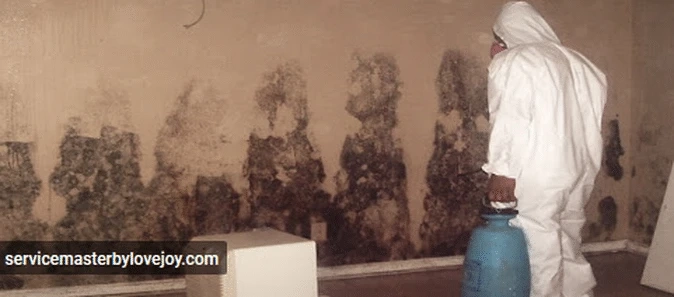[caption class="snax-figure" align="aligncenter" width="1140"][/caption] If you believe you’ve found mold in your home, the optimal way to plan its removal is to hire ServiceMaster, an experienced professional to conduct an initial mold inspection. This inspection determines the type of mold and extent of damage in your home so that you can implement the most effective cleanup methods. Mold and dampness in homes may cause health problems. Indoor mold and dampness can also cause unpleasant odors and damage to building materials, contents, and structures, which can lead to expensive maintenance or management costs. If the problem is large, recurring or can’t be found (hidden mold) professionals like ServiceMaster by LoveJoy help may be required. Professionals may be required for identifying and cleaning the mold and for fixing the underlying problem. Indoor environment experts or mold specialists may be required to evaluate and remediate mold problems, plumbers may be needed to identify and fix plumbing leaks, builders or roof specialists will be required to fix leaks in the building structure, air-conditioning consultants/engineers may be needed for identifying problems with the air conditioning system. ServiceMaster by LoveJoy has all these services on staff. What generally happens during a home mold inspection, what credentials you should look for in a mold inspector, and common removal tactics and cleanup methods.
VISUAL INSPECTION:
A visual inspection checks for mold throughout your house, including hidden areas like the HVAC system. That inspection is not limited to just the inside of your home. The inspection also includes the building envelope and the surrounding landscape.
CORRECT DIAGNOSIS:
After inspection, the sources of moisture intrusion and/or relative humidity sources are identified.
FUNGAL SAMPLING:
Air, surface, and bulk samples are taken to determine the type and level of contamination. For example, air sampling can determine if the type of mold in your house is the type that causes allergic reactions from inhalation.
WRITTEN REPORT:
The report will detail findings and recommendations to remediate problem areas and prevent future occurrences of mold growth.


